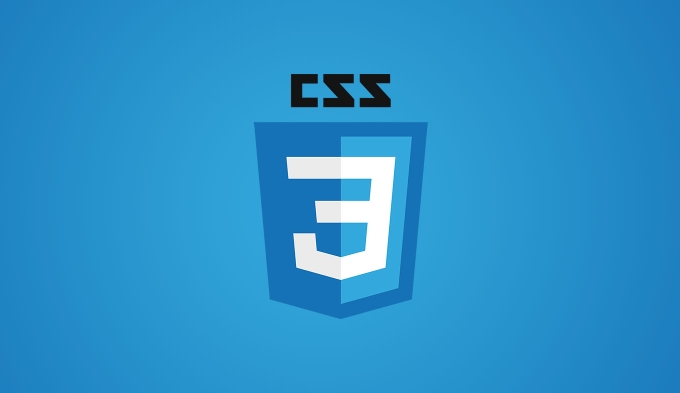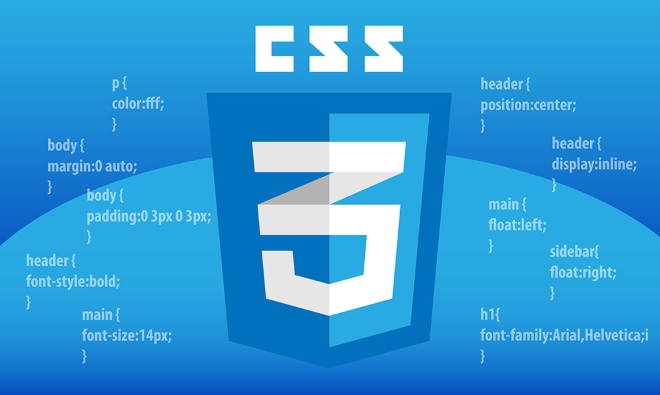Strategies for building responsive designs with CSS Media Queries
Jul 06, 2025 am 01:59 AMThe key to responsive design is to reasonably divide breakpoints and adjust the styles in a targeted manner. 1. Understand the basic structure of media query, use @media plus conditional judgment, such as setting styles according to screen width; multiple conditions can be combined to adapt to different devices. 2. Setting reasonable breakpoints should be based on content and design drafts. It is recommended to gradually adapt to large screens starting from the mobile terminal. Common reference values ??include vertical screen max-width: 767px for mobile phones, vertical screens for tablets, and above 1023px for desktop browsers. 3. To modify the key styles in a targeted manner, you only need to adjust the parts that really need to be changed, such as layout switching, font size, image button size, element display and hidden. 4. Use the mobile-first strategy to write mobile styles first and then gradually expand them to improve loading speed and maintenance efficiency, and pay attention to the style writing order: General → Mobile → Desktop. Mastering these key points can achieve a simple and practical responsive design.

The key to using CSS media query for responsive design is not how complicated it is, but how to break points and how to adjust the style. To put it directly, the key point is: reasonably divide the screen range and adjust the layout and element performance in a targeted manner, so that the page looks suitable on different devices.

1. Understand the basic structure of media queries
The syntax of media query is actually quite simple, the core is to add conditional judgments after @media . The most common usage is to set different styles according to the screen width:

@media (max-width: 768px) {
/* Mobile style*/
}You can also add multiple conditions at the same time, such as judging the maximum and minimum widths at the same time:
@media (min-width: 769px) and (max-width: 1024px) {
/* Flat style*/
}Small suggestions: Don’t write too many breakpoints at the beginning, start with the mobile terminal and gradually adapt to a larger screen, which makes it easier to control.
2. Set reasonable breakpoints
Breakpoints are not determined casually, they should be decided based on your content and design draft. Several commonly used reference values ??include:
- Mobile phone vertical screen :
max-width: 767px - Tablet vertical screen :
min-width: 768pxtomax-width: 1023px - Desktop browser :
min-width: 1024px
However, the more recommended method is: first write the mobile style, then gradually enlarge the browser window, and add a breakpoint when you see the layout "problem".
for example:
- When the text line is too long, it affects reading
- The picture layout is inconsistent
- Buttons become too small and hard to click
At this time, adding a media query to adjust will be more meaningful than sticking to a few fixed sizes.
3. Targeted modification of key styles
There is no need to rewrite all styles in media queries, just change the parts that really need to be changed. Several common types of adjustments include:
- Layout changes : For example, change from flex to grid, or switch the position of the sidebar
- Font size : Appropriately increase fonts on large screens to improve readability
- Image and button size : Avoid being pressed too small or deformed on small screens
- Hide/show certain elements : For example, the mobile terminal can close the navigation menu and use the hamburger icon instead
For example, I want to turn the navigation bar into a vertical arrangement on a small screen:
@media (max-width: 767px) {
.nav {
flex-direction: column;
}
}There are not many changes in this way, but the experience is significantly improved.
4. Use mobile-first strategies to be more efficient
The so-called "mobile first" means writing the style that is suitable for the phone first, and then adding enhanced styles to the larger screen through media queries. This method has two benefits:
- The phone loads faster because you don't need to download extra desktop styles
- It is easier to maintain logic, expand step by step from small to large
It is also important to pay attention to the order when writing: the general style is placed at the front, the mobile dedicated style is followed by the desktop overlay style.
Basically that's it. The key to making good use of media inquiries is not to have many, but to be precise. As long as you grasp the two points of content adaptability and user experience, you can make a simple and practical responsive design.
The above is the detailed content of Strategies for building responsive designs with CSS Media Queries. For more information, please follow other related articles on the PHP Chinese website!

Hot AI Tools

Undress AI Tool
Undress images for free

Undresser.AI Undress
AI-powered app for creating realistic nude photos

AI Clothes Remover
Online AI tool for removing clothes from photos.

Clothoff.io
AI clothes remover

Video Face Swap
Swap faces in any video effortlessly with our completely free AI face swap tool!

Hot Article

Hot Tools

Notepad++7.3.1
Easy-to-use and free code editor

SublimeText3 Chinese version
Chinese version, very easy to use

Zend Studio 13.0.1
Powerful PHP integrated development environment

Dreamweaver CS6
Visual web development tools

SublimeText3 Mac version
God-level code editing software (SublimeText3)

Hot Topics
 How can I include CSS only on some pages?
Jun 11, 2025 am 12:01 AM
How can I include CSS only on some pages?
Jun 11, 2025 am 12:01 AM
There are three ways to selectively include CSS on a specific page: 1. Inline CSS, suitable for pages that are not frequently accessed or require unique styles; 2. Load external CSS files using JavaScript conditions, suitable for situations where flexibility is required; 3. Containment on the server side, suitable for scenarios using server-side languages. This approach can optimize website performance and maintainability, but requires balance of modularity and performance.
 Flexbox vs Grid: Understanding the Key Differences in CSS Layout
Jun 10, 2025 am 12:03 AM
Flexbox vs Grid: Understanding the Key Differences in CSS Layout
Jun 10, 2025 am 12:03 AM
Flexboxisidealforone-dimensionallayouts,whileGridsuitstwo-dimensional,complexlayouts.UseFlexboxforaligningitemsinasingleaxisandGridforprecisecontroloverrowsandcolumnsinintricatedesigns.
 Creating an Auto-Closing Notification With an HTML Popover
Jun 10, 2025 am 09:45 AM
Creating an Auto-Closing Notification With an HTML Popover
Jun 10, 2025 am 09:45 AM
The HTML popover attribute transforms elements into top-layer elements that can be opened and closed with a button or JavaScript. Popovers can be dismissed a number of ways, but there is no option to auto-close them. Preethi has a technique you can u
 What is 'render-blocking CSS'?
Jun 24, 2025 am 12:42 AM
What is 'render-blocking CSS'?
Jun 24, 2025 am 12:42 AM
CSS blocks page rendering because browsers view inline and external CSS as key resources by default, especially with imported stylesheets, header large amounts of inline CSS, and unoptimized media query styles. 1. Extract critical CSS and embed it into HTML; 2. Delay loading non-critical CSS through JavaScript; 3. Use media attributes to optimize loading such as print styles; 4. Compress and merge CSS to reduce requests. It is recommended to use tools to extract key CSS, combine rel="preload" asynchronous loading, and use media delayed loading reasonably to avoid excessive splitting and complex script control.
 How to use Lotties in Figma
Jun 14, 2025 am 10:17 AM
How to use Lotties in Figma
Jun 14, 2025 am 10:17 AM
In the following tutorial, I will show you how to create Lottie animations in Figma. We'll use two colorful designs to exmplify how you can animate in Figma, and then I'll show you how to go from Figma to Lottie animations. All you need is a free Fig
 Breaking Boundaries: Building a Tangram Puzzle With (S)CSS
Jun 13, 2025 am 11:33 AM
Breaking Boundaries: Building a Tangram Puzzle With (S)CSS
Jun 13, 2025 am 11:33 AM
We put it to the test and it turns out Sass can replace JavaScript, at least when it comes to low-level logic and puzzle behavior. With nothing but maps, mixins, functions, and a whole lot of math, we managed to bring our Tangram puzzle to life, no J
 External vs. Internal CSS: What's the Best Approach?
Jun 20, 2025 am 12:45 AM
External vs. Internal CSS: What's the Best Approach?
Jun 20, 2025 am 12:45 AM
ThebestapproachforCSSdependsontheproject'sspecificneeds.Forlargerprojects,externalCSSisbetterduetomaintainabilityandreusability;forsmallerprojectsorsingle-pageapplications,internalCSSmightbemoresuitable.It'scrucialtobalanceprojectsize,performanceneed
 Does my CSS must be on lower case?
Jun 19, 2025 am 12:29 AM
Does my CSS must be on lower case?
Jun 19, 2025 am 12:29 AM
No,CSSdoesnothavetobeinlowercase.However,usinglowercaseisrecommendedfor:1)Consistencyandreadability,2)Avoidingerrorsinrelatedtechnologies,3)Potentialperformancebenefits,and4)Improvedcollaborationwithinteams.







